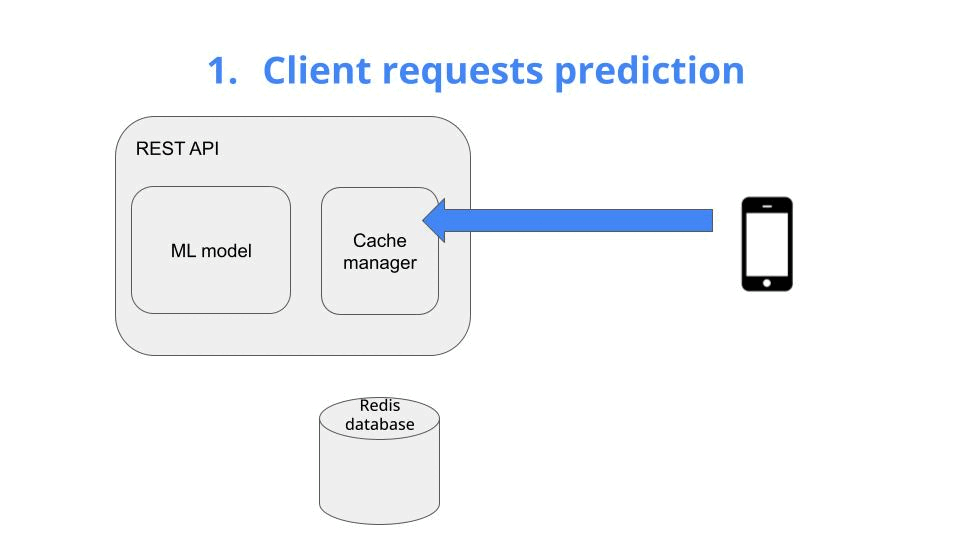A very common way to deploy an ML model, and make its predictions accessible to other services, is with a REST API.
It works as follows:
The client requests a prediction -> Give me the price of ETH/EUR in the next 5 minutes
The ML model generates the prediction,
The prediction is sent back to the client -> predicted price = 2,300 USD
This design works, but it can become terribly inefficient in many real-world scenarios.
Why?
Because more often than not, your ML model will re-compute the exact same prediction it already computed for a previous request.
So you will be doing the same (costly) work more than once 😵💫.
This become a serious bottleneck if the request volume grows, and you model is large, like a Large Language Model.
So the question is:
Is there a way to avoid re-computing costly predictions? 🤔
And the answer is … YES!
Solution 🧠
Caching is a standard technique to speed up API response time.
The idea is very simple. You add a fast key-value pair database to your system, for example Redis, and use it to store past predictions.
When the first request hits the API, your cache is still empty, so you
generate a new prediction with your ML model
store it in the cache, as a key-value pair, and
return it to the client
Now, when the second request arrives, you can simply
load it from the cache (which is super fast), and
return it to the client
To ensure the predictions stored in your cache are still relevant, you can set an expiry date. Whenever a prediction in the cache gets too old, it is replaced by a newly generated prediction.
For example
If your underlying ML model is generating price predictions 5 minutes into the future, you can tolerate predictions that are up to, for example, 1-2 minutes old.
Example with full source code 👩💻👨🏽💻
In this repository that I created you will find a minimal Python implementation of a REST API with and without caching using FastAPI and Redis.
Git clone it, and run
$ make installto install all project dependencies inside an isolated virtual env.
You can spin up the FastAPI server without cache
$ make api-without-cacheor with cache
$ make api-with-cachesend a batch of requests and measure their response time
$ make requests
Time taken: 1029.59ms <-- new prediction
Time taken: 13.09ms <-- very fast
Time taken: 8.47ms <-- very fast
Time taken: 7.74ms <-- very fast
Time taken: 12.98ms <-- very fast
Time taken: 1020.92ms <-- new prediction
Time taken: 8.40ms <-- very fast
Time taken: 12.61ms <-- very fast
Time taken: 10.55ms <-- very fast
...Wanna learn to build real-time ML systems, together? 🏗️🙋🏾♂️
On September 16th 150+ brave students and myself will start building, step-by-step a real-time ML system that predicts crypto prices.
After completing this 4-week program (+ A LOT of hard work on your end) you will know how to
Build modular and scalable real-time ML systems
For the business problem you care about
Using any real-time data source
Following MLOps best practices, for fast iteration and short-time-to-market.
And of course, we will implement REST API caching ⚡
Wanna know more about
Building a Real-time ML System. Together?
↓↓↓
Talk to you next week,
Peace and Love
Pau






